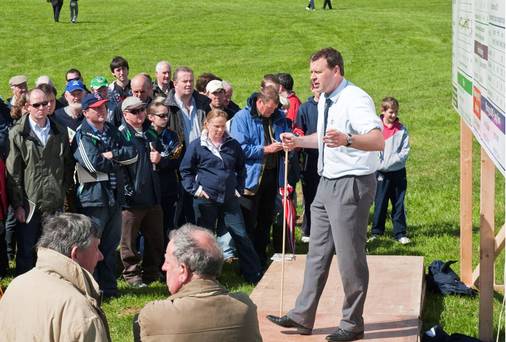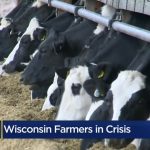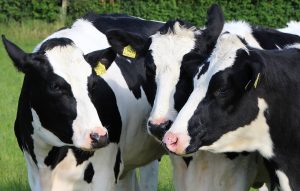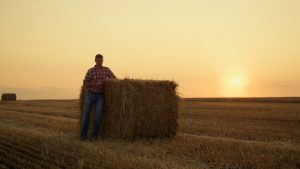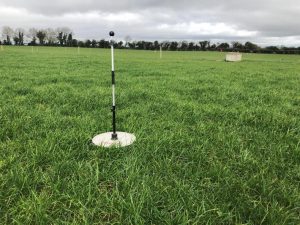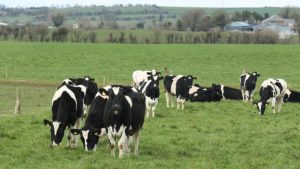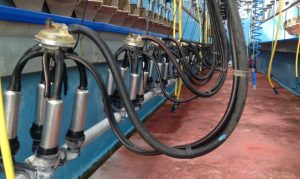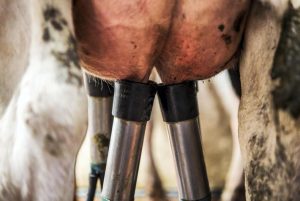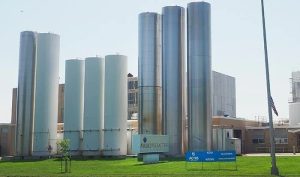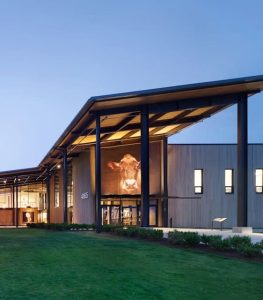
At the recent Teagasc national dairy conference Dr Padraig French looked back on calf mortality on Irish dairy farms over the last nine years and highlighted that calf mortality was extraordinarily low by international standards; which typically range between 5pc and 10pc in most significant dairy industries and are greater in some.
What was also noteworthy was that there was no deterioration as the dairy herd expanded and there was also no relationship between calf price and calf mortality; both of which were low in 2019.
Despite the reports of ‘all the extra calves’ that will be on dairy farms next spring compared to spring 2019, Dr French reported that the additional calf numbers equates to three more calves per farm.
Due to the current beef market, it is anticipated that calf sales in 2020 will be difficult. While there is no evidence that this will cause a calf welfare problem, it will likely put an increased workload on dairy farmers to rear these calves for a longer period.
This will put more work on dairy farmers during an already very busy period so it is important to put a plan in place before the calving season and carry out an audit on existing calf facilities.
Some farms may not have calf accommodation for all calves. This will vary depending on calving pattern, sale date of beef calves and age at turnout for calves retained on farm. Firstly, dairy farmers need to calculate how many calves they will have at peak. They should then establish how many calves can be accommodated in calf sheds.
Floor area and air space should be calculated to determine housing capacity. Calves require 1.7 m2 each (1.5 m2 less than three weeks of age) and 7 m3 of total air space per calf. The floor area can be calculated by multiplying the pen depth by pen width and dividing by 1.7 (sq. meters per calf) while the floor area is determined by multiplying pen width by pen depth by the average roof height divided by 7 (cubic meters per calf).
Whichever figure, floor area or total air space, is lower is what can be accommodated in the shed. If the calf shed is falling short on capacity, plan for extra space by getting temporary calf sheds, such as hutches, or convert existing houses to accommodate calves. Run-off needs to be collected in appropriate storage tanks. Calves should have a dry lie and be housed in draft free environments. Bedding material should be kept fresh under calves and cleaned out regularly.
This should reduce build-up of infectious pathogens and protect later-born calves. Remember, never compromise on space and do not overcrowd calves.
Support scheme
Applications are open for the €1.5 million support scheme for calf rearing.
The primary investment focus is on calf milk feeding systems; computerised calf feeders, milk carts with mixer included and calf teat feeders. Secondary supports are also available for other items such as calf milk heaters, calf forage/hay racks, calf meal troughs, calf feed barriers and calf pen dividers.
Labour saving calf equipment can also alleviate some of the additional workload in spring. Calf transportation from the calving pen, milk trolleys, calf feeders, milk and water heating equipment are all available to reduce the workload.
However, maintaining good hygiene standards and health protocols throughout the springtime should reduce the levels of sickness on farms and ensure that calves thrive well.
Also, for those that are employing labour in the springtime it would be worth buying wellingtons and overalls for staff to minimise disease risk from other farms. Also ensure that disinfectant is at the door of the calf shed and is topped up regularly.
Prevention is better than cure. Scours and respiratory diseases are the major causes of death in young calves.
Vaccinations are available to prevent/reduce scours associated with Rotavirus, Coronavirus, E-Coli and Salmonella. Cryptosporidium is a major cause of scour in young calves and it is difficult to remove from the calf house.
Intensive washing and use of the appropriate disinfection for cryptosporidium in advance of calving is essential.
A significant amount of labour is associated with sick calves.
Vaccinating against respiratory disease should be considered to reduce the incidence of pneumonia. Such vaccination programmes reduce disease severity and improve immunity. Sick calves should not be vaccinated, nor should they be vaccinated at a stressful time such as disbudding, banding or changes to group pens.
Discuss a vaccination programme with you veterinary practitioner. Vaccinating calves that will be for sale may also give you a competitive advantage in the marketplace as it would be a big plus for calf buyers.
Robert Prendiville is a Teagasc advisor based in Listowel, Co Kerry
